So it looks like I'll need to make more smaller support posts between my main wall framing posts.
Here - the secret of TWISTING (and turning) the wattle - is revealed - so you can turn the wattle back around against itself without the wattle breaking.
So in this vid - just as I suspected - they make clay slip - stray and clay mixed together and then stamp it into form walls with bamboo supports in between.
This is what I was looking for!
So in that case - I think the wattle can be "wider" like a form wall.
packing straw clay slip into form walls vid

Ok - now I see - I need to add two sides of posts to make the DOUBLE wattle - as a "form" wall - and to then PACK the clay straw-hay slip in between.
NOW it's clicking all together....
OK now I'm rereading that article I posted before....
The key secret here is to use smaller poles right next to the larger structural beam posts (that I already put in)... so that EVERY wattle rod does not have to go "around" the bigger beam post (just every other one).... or so their "reconstructive" archaeology indicates.
Every second rod was led along the front side of the beam while the others were clamped behind a pole next to the beam. This resulted in a firm connection between the beams and wattles (See Figures 13, 14 and 15).
fascinating - so they used an axe to make sure the clay plaster would cover their support beams - making holes into the wood.... pretty wild.
But in ANCIENT times - nope -
The Bronze Age houses did not need to be worked with an axe as the rods running around the beams in a horizontal direction kept the clay in place.
So up to this point...
In many reconstructions of pre—historic houses built with only one wattle there is a discrepancy between the width of the beams carrying the roof and the width of the thinner wattle. As the supporting beams should at least be 10-15 cm, the wattle only comes up with 7 cm. With two wattles there is no such problem as the two wattles can be adjusted to fit to the width of the beams....
So that shows the imprints of the grass - as from the "inside" of the wattle wall.
and then a reconstruction of the above Bronze Age archaeological discovery:
So it's clearly grass fragments!
So the "bulges" on one side indicate no resistance to the clay (versus a 1 wattle wall having the clay pressed against itself on both sides)
Many heavy clay pieces show these wood
weaving imprints on both sides. So it is probable that the outside
walls were of two flat wattles standing in close connection, the inside
of which was completely filled with clay, a kind of clay that was mixed
completely with pieces of straw and husks. Nowadays naturally these can
only be recognized after their decay by the remaining pores.
This mass mixed up with straw and pelts created good insulation between the two wattles. The loose dry grass provides better insulation, but it does not offer the same stability.So their "reconstruction" does not get the fill proper - it is supposed to be Clay Slip!!
citing: Stone Age settlement of Grossgartach (Schliz 1901)

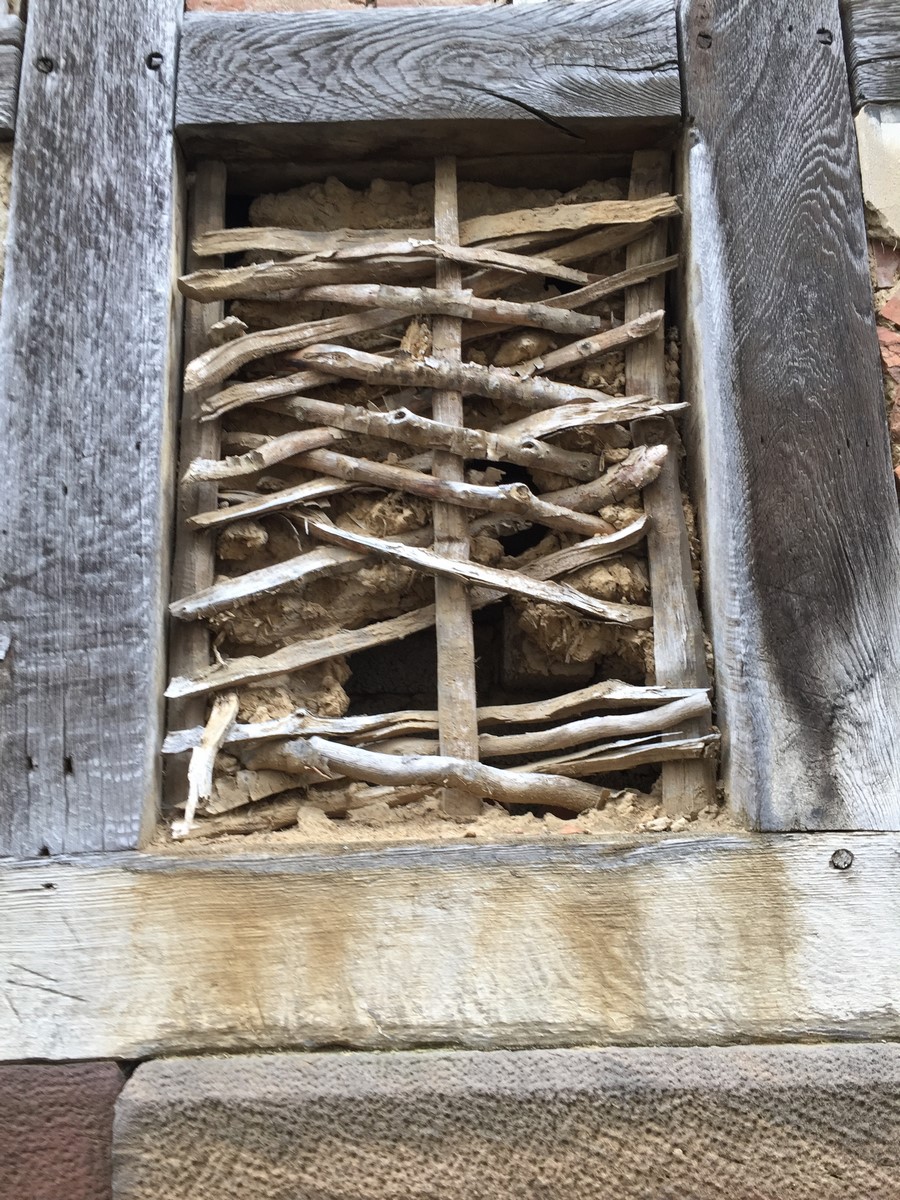

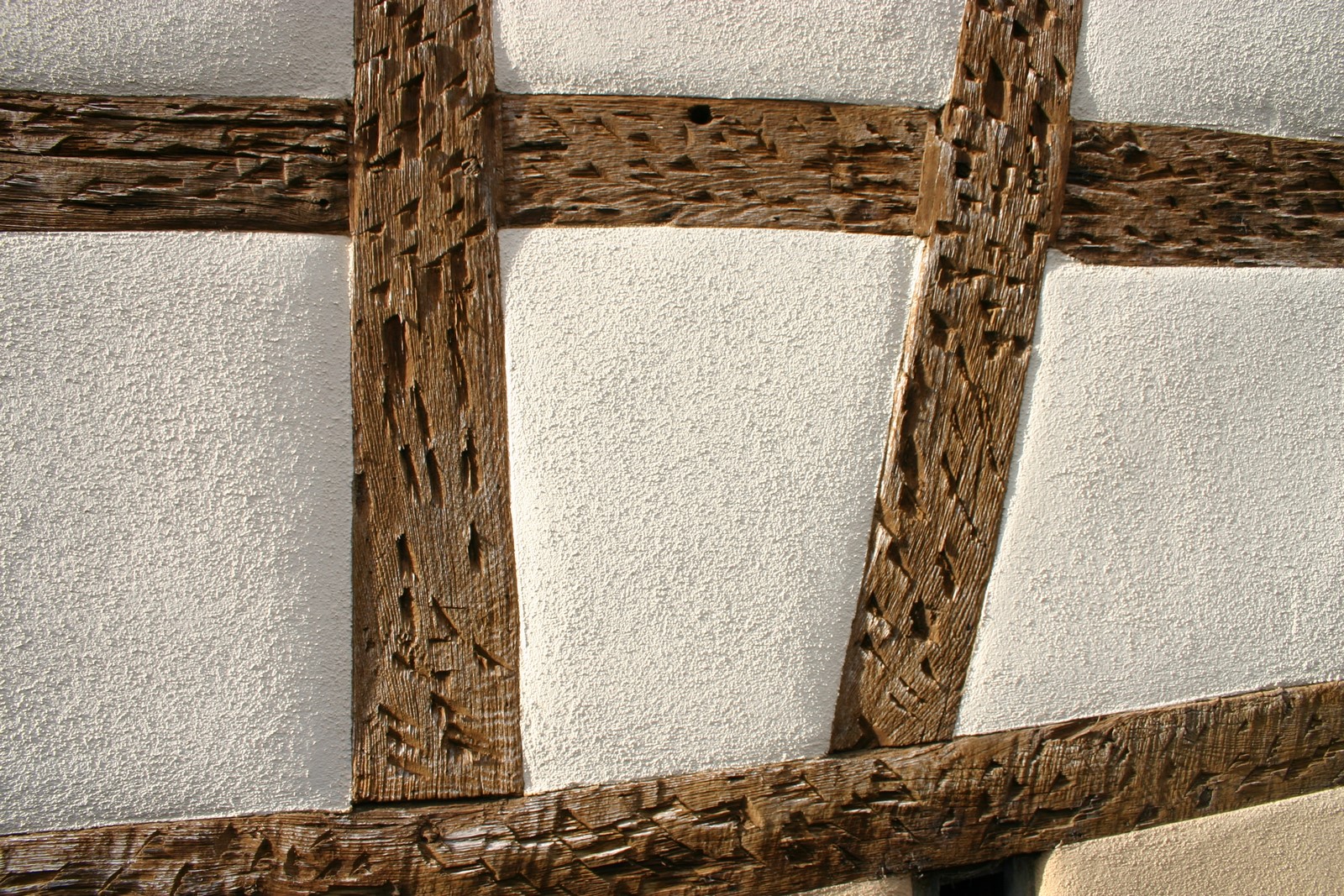
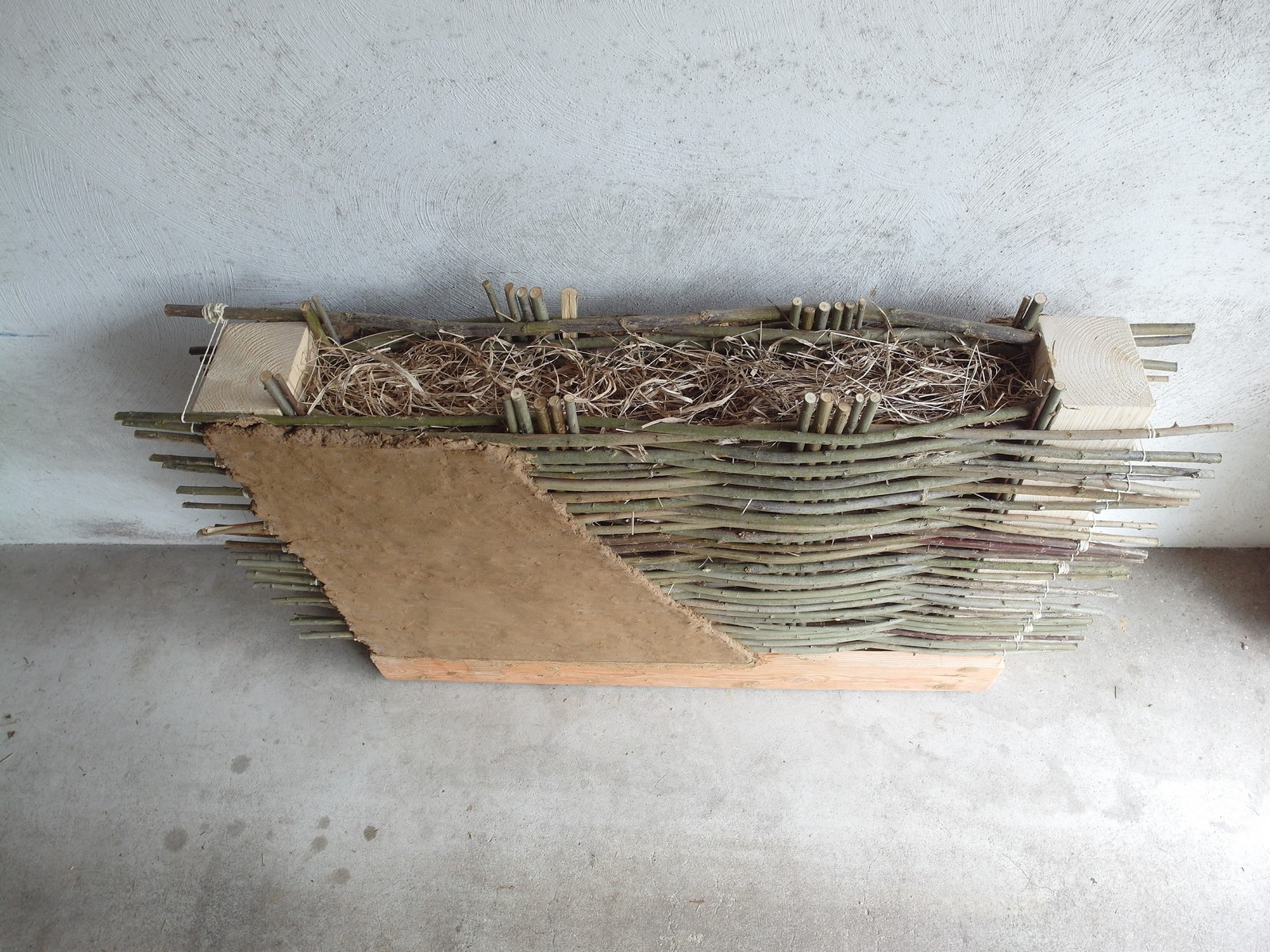
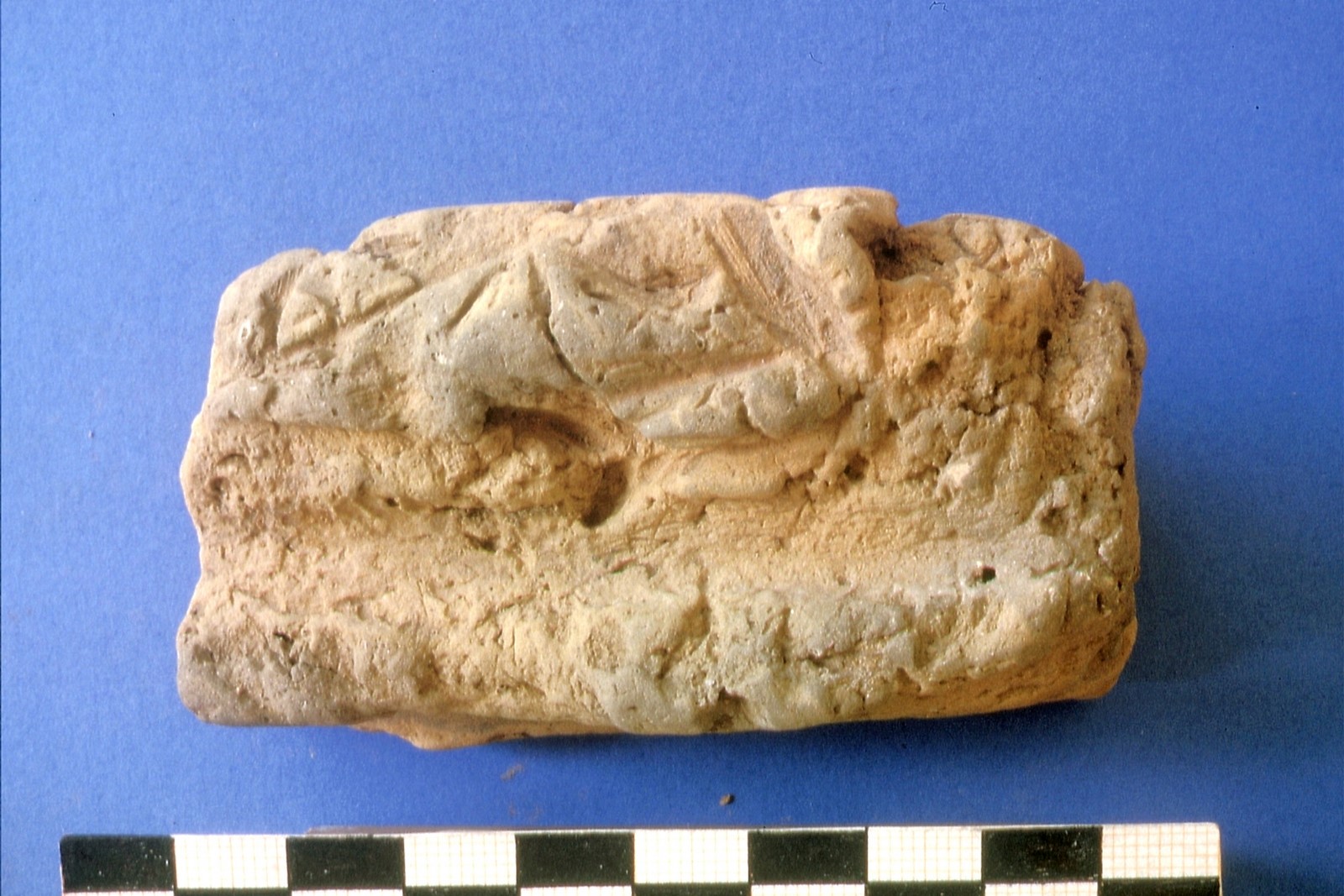
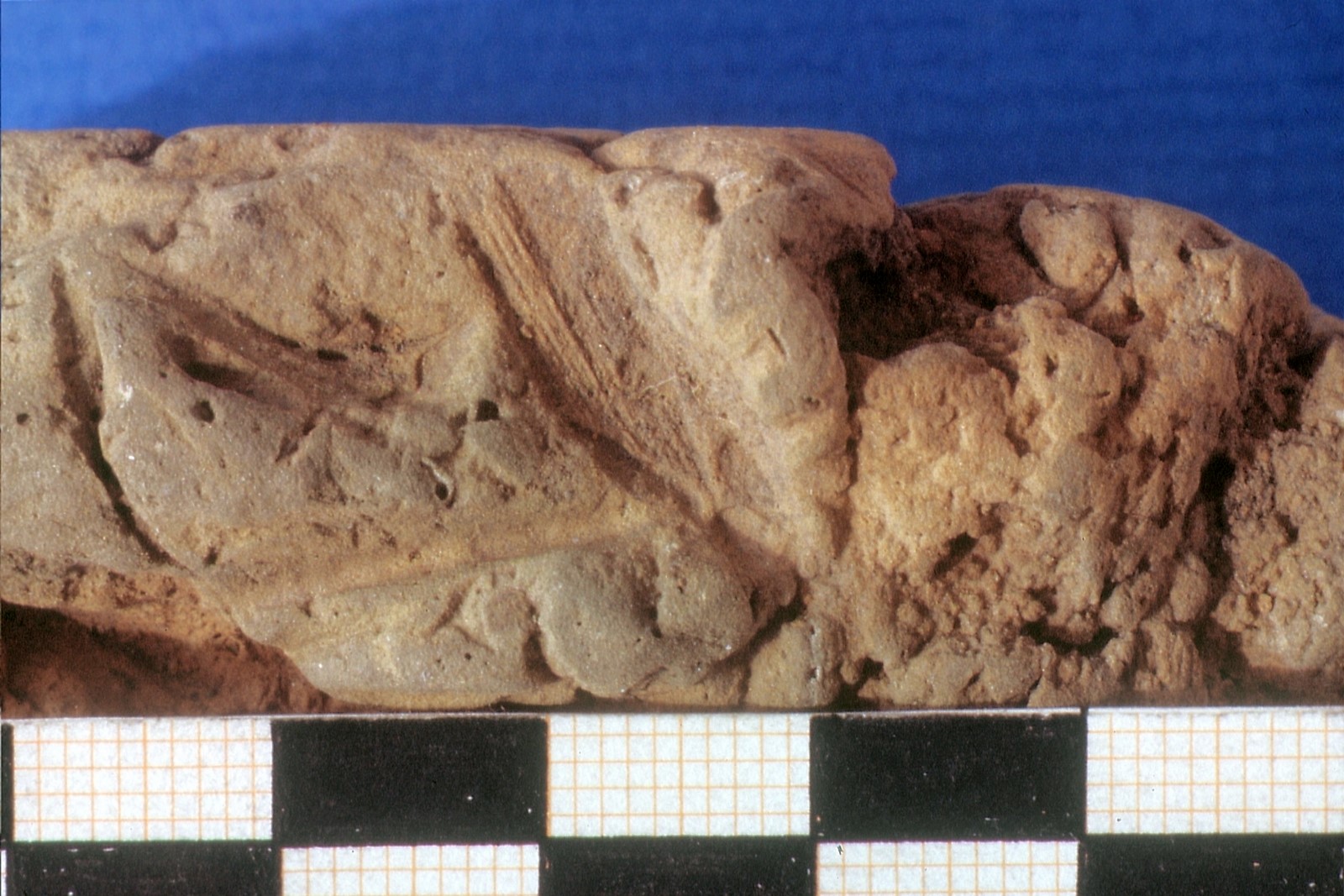
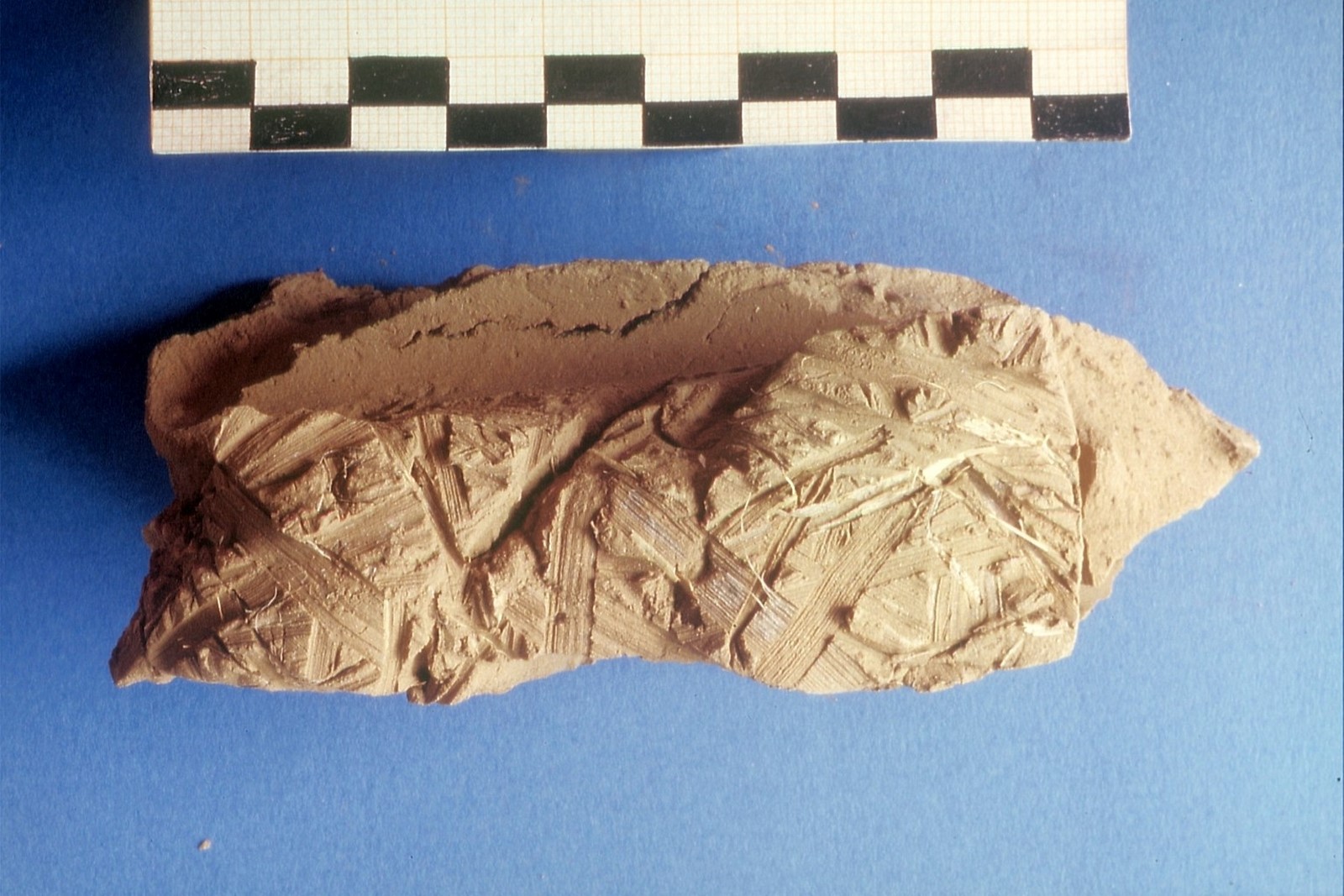

No comments:
Post a Comment